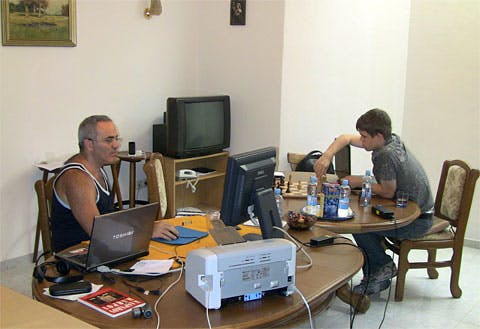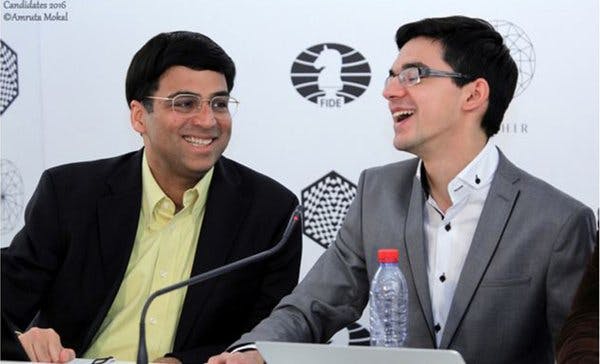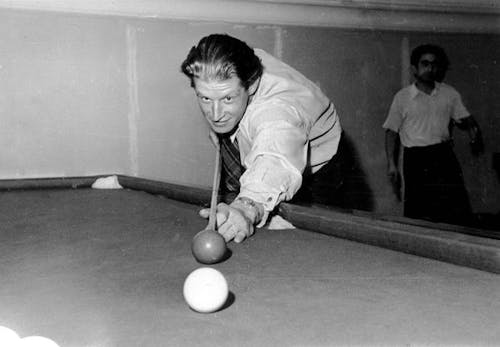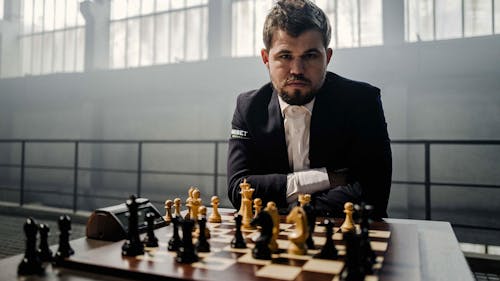Are you sure you want to delete your account?
(This will permanently delete all of your data - purchases, game scores, ratings, etc)
Change your username
Your current username is: guest
Change your account email address
Your current account email is:
Redeem your Fampay code here!
Use your Fampay code to get access to the Play Magnus Plus Membership!

Learning from the Best – Focus on the Virtues
Pretty much every person in the world can teach you something. This is especially true of the very best chess players. Still, a common mistake amateurs make is focusing too much on the shortcomings of the elite GMs.
The reasoning goes like this: “They are rated much higher than me, yet they do this. Hence, I can also afford not to work on this problem.” True? Not really.
All of us have individual virtues and shortcomings, as well as personal preferences. One should be careful when imitating the habits of top GMs. For example, if one of them doesn’t work on the opening much, the other – on the middlegame, and the third one dislikes endgames, then you might end up not doing any chess studies at all by combining all the three approaches!
Nevertheless, I often hear people saying something like: “Magnus Carlsen doesn’t study the opening much, so scrap it” (this is an outdated myth, by the way!); “Hikaru Nakamura trash talks people after losing, so why can’t I do it?”; “Alexander Khalifman used to show up for the round on shaking legs with a hangover, so what is so bad about drinking alcohol during an event?”. The flaw in this logic is that one should focus on the numerous virtues of the top players instead of trying to copy their few weaknesses. For example, a much more feasible attitude would be to say: “I want to be such an amazing practical player as Carlsen, knowing how to set problems for my opponent at every stage of the game”; “I will learn from Nakamura how to excel at speed chess”; “Khalifman is a supreme example of a hard-working, self-made chess player and a top-notch theoretician.”
Most of us are “privileged” since we have so many chess weaknesses that the potential for improvement is enormous. However, even the best players in the world have to reinvent themselves from time to time to remain on top of the circuit. Here are a few examples.
No matter how self-confident and dominant Garry Kasparov was, he didn’t pass up the opportunity to invite players who were of interest to him for a training session. For instance, when Kasparov lost in the 2004 European Club Cup to Sergey Rublevsky, Garry offered him to participate in a training camp together. Apparently, the idea was to see if there was something special about the Russian Grandmaster that Kasparov could add to his arsenal. Needless to be said, this was by far not the only case of this sort.

Garry Kasparov, arguably the greatest chess player of all time, found a worthy successor in Magnus Carlsen. Image from 2009, ChessBase.com.
It is common knowledge that Magnus Carlsen has at some point cooperated with most of the world’s top players. Since he is the forerunner when it comes to extending the human limits in chess, every little step forward at his level requires a tremendous number of effort. Magnus keeps an eye not only on his direct competitors but also on the promising juniors. This way, he had worked with Wesley So and Anish Giri before they became part of the top-10. Carlsen is also generous in the sense that his training partners have more to learn from him than he can rub off them. Still, he is willing to make this trade as long as he becomes a better player because of it. Another curious point is that in his junior years, Carlsen was more willing to learn from the experience of seasoned pros, such as his former mentor, Garry Kasparov. Nowadays, as Magnus has become a middle-aged man, he seems to be more interested in cooperating with junior players to not miss out on innovative trends.

Viswanathan Anand and Anish Giri sharing a laugh during the Candidates-2016
In a Chess.com interview in May 2019, Anish Giri said the following about Vishy Anand, who as of this day remains a member of the top-20 at the age of 52:
His main advantage compared to others of his age is that he’s truly young at heart. For example, many people of his age don’t welcome change. They stop downloading the latest software versions of things or don’t update their apps, like young people do. But Vishy is the kind of guy who I am sure updates all the apps on his phone. The fact that he’s accomplished what he has and remained there for so long is because he’s able to reinvent himself, and change the way he works, the way he approaches things, just like a younger person does.
Vishy was quite entertained by this assessment and, when meeting Giri for the next time, showed him his smartphone, proving that he does keep all his apps updated! Another competitive advantage of Anand is that he has always been tech-savvy. The people who have worked with him attest that he is always on the cutting edge when it comes to squeezing the most out of chess databases and engines. This is a stark contrast to some other players of his generation, who like to make excuses about being “veterans” and prefer to work exclusively with real chess boards and books, leaving the computer analysis to their seconds or mainly ignoring it.
Bottom line: you should pinpoint the very best qualities of the top players and try to replicate them instead of gloating over their imperfections.
On a more general note, this tip works with respect to celebrities. A common mistake is to focus all the attention on their missteps, copying the worst in them. However, one should keep in mind that most of the world’s most prominent influencers became successful not due to their drinking habits, home violence, or promiscuity, but some serious achievements that require both enormous talent and sustained hard work for years and years.
Finally, are there any exceptions to the rule formulated above? Well, of course, if you are inventive enough, you can come up with some. There are people, especially perfectionists and players with low self-esteem, who could use a confidence shot from time to time, getting it from looking over the top GMs’ most terrible games and realizing that even the chess stars are only human. Also, if you are specifically preparing against one of those players, it could also make some sense to pay a significant amount of attention to their weaknesses and ways to exploit them. Even then, you will need to form a balanced picture, giving due credit to your opponents’ strengths along with their soft spots.
Wondering how to invite all these super GMs to your home for a training session? This is no easy task. However, since Magnus Carlsen has kindly done this work for you, there is a shortcut. Download our apps at a discounted price and let the World Champion and his team of world-class experts share some valuable insights with you!

